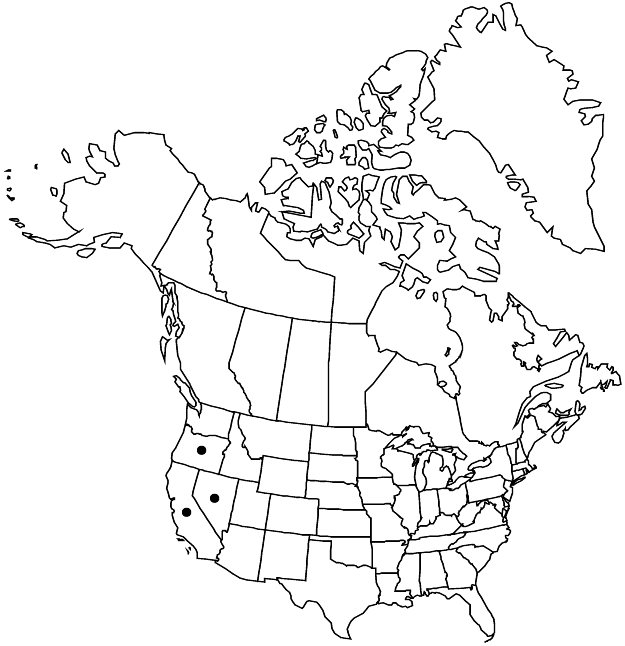Difference between revisions of "Eriogonum lobbii"
Proc. Amer. Acad. Arts 8: 162. 1870.
FNA>Volume Importer |
imported>Volume Importer |
||
| Line 8: | Line 8: | ||
}} | }} | ||
|common_names=Lobb’s wild buckwheat | |common_names=Lobb’s wild buckwheat | ||
| + | |special_status={{Treatment/ID/Special_status | ||
| + | |code=E | ||
| + | |label=Endemic | ||
| + | }} | ||
|basionyms= | |basionyms= | ||
|synonyms= | |synonyms= | ||
| Line 46: | Line 50: | ||
|publication title=Proc. Amer. Acad. Arts | |publication title=Proc. Amer. Acad. Arts | ||
|publication year=1870 | |publication year=1870 | ||
| − | |special status= | + | |special status=Endemic |
| − | |source xml=https:// | + | |source xml=https://bitbucket.org/aafc-mbb/fna-data-curation/src/2e0870ddd59836b60bcf96646a41e87ea5a5943a/coarse_grained_fna_xml/V5/V5_774.xml |
|subfamily=Polygonaceae subfam. Eriogonoideae | |subfamily=Polygonaceae subfam. Eriogonoideae | ||
|genus=Eriogonum | |genus=Eriogonum | ||
Latest revision as of 22:13, 5 November 2020
Herbs, compact or sprawling, matted, 0.3–3 × 1–2.5 dm, tomentose to floccose. Stems: caudex absent or nearly so; aerial flowering stems prostrate to decumbent or weakly erect, slender or stout, solid, not fistulose, usually arising directly from a taproot, 0.5–1.5(–2) dm, tomentose to floccose. Leaves basal, in well-defined rosettes; petiole (0.8–)1–3.5(–5) cm, tomentose to floccose; blade ovate to obovate or round-oval, 1–4(–5) × 1–4(–5) cm, densely white- to grayish- or reddish-tomentose abaxially, less so to floccose or glabrous and greenish adaxially, margins entire, plane. Inflorescences subcapitate to umbellate or infrequently 2-umbellate, 1–4 × 1–4 cm; branches tomentose to floccose; bracts 3–5 at proximal node, leaflike, 0.6–1.5(–2.5) × 0.1–0.5(–0.8) cm, sometimes absent immediately below involucre. Involucres 1 per node, turbinate-campanulate to campanulate, 5–10(–12) × 5–10(–12) mm, thinly tomentose to lanate; teeth 6–10, usually lobelike, mostly reflexed, 2–6 mm. Flowers 5–7 mm, including 0.1–0.4 mm stipelike base; perianth white to rose, glabrous; tepals monomorphic, oblong-obovate; stamens exserted, 5–7 mm; filaments pilose proximally. Achenes light brown to brown, 4.5–6 mm, glabrous. 2n = 40.
Phenology: Flowering Jun–Aug.
Habitat: Gravelly to rocky or talus slopes, mixed grassland, buckbrush, manzanita, and sagebrush communities, montane, subalpine, or alpine conifer woodlands
Elevation: (1000-)1600-3800 m
Distribution

Calif., Nev., Oreg.
Discussion
Eriogonum lobbii is rather infrequent throughout its range. It is found in three widely scattered areas of concentration: the high mountains of northwestern California and southwestern Oregon; the southern portion of the North Coast Range of California; and the Sierra Nevada of eastern California and west-central Nevada. In the first two areas, the plants frequently are associated with serpentine soils; elsewhere the species is found almost exclusively on granitic soils and infrequently on volcanic ones. There are some morphologic differences between the Sierran plants and those of the coastal mountains, but no taxonomic separation is suggested. The species is a food plant for the intermediate dotted-blue butterfly (Euphilotes intermedia).
Selected References
None.